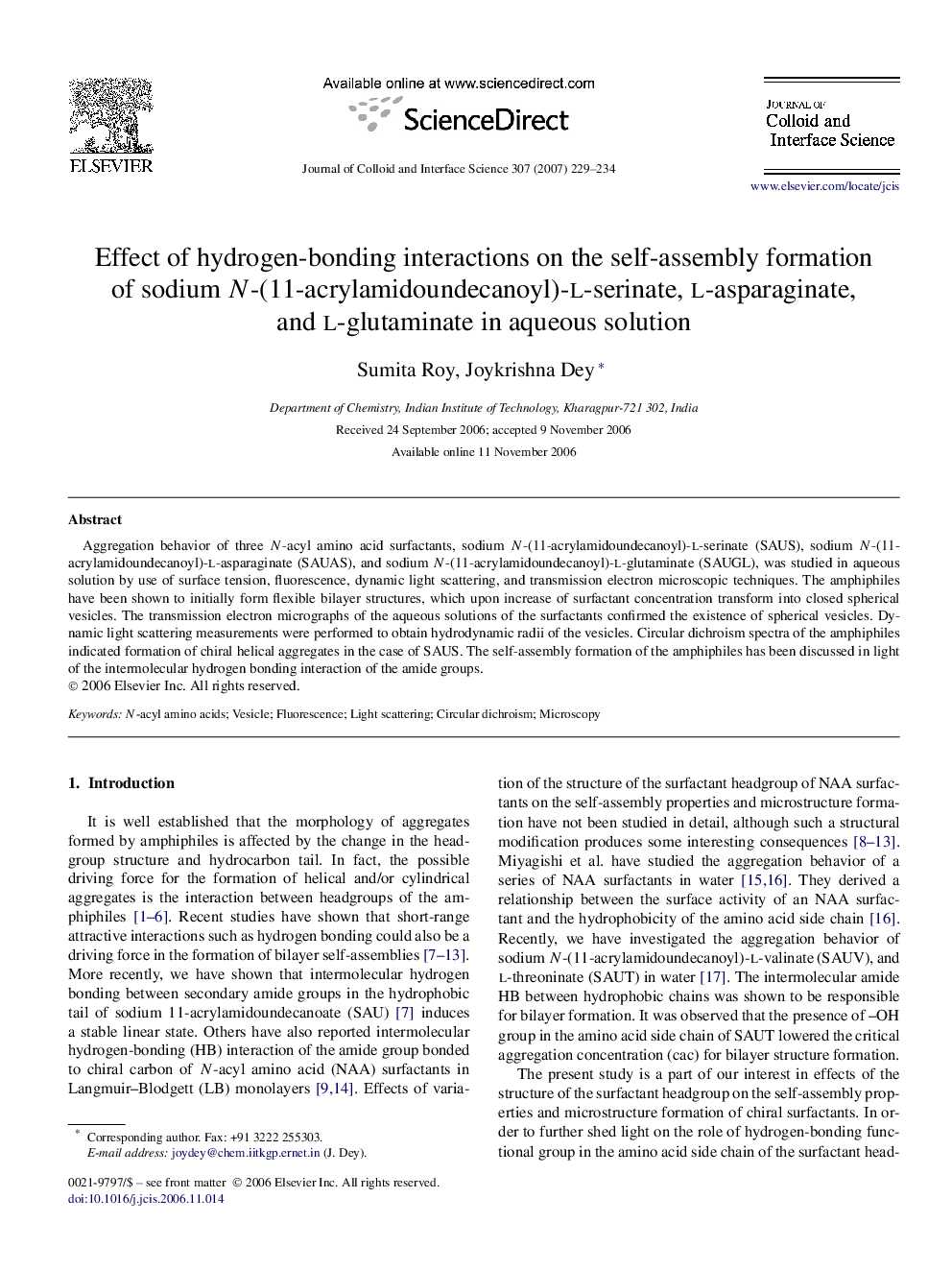| Article ID | Journal | Published Year | Pages | File Type |
|---|---|---|---|---|
| 612535 | Journal of Colloid and Interface Science | 2007 | 6 Pages |
Aggregation behavior of three N-acyl amino acid surfactants, sodium N-(11-acrylamidoundecanoyl)-l-serinate (SAUS), sodium N-(11-acrylamidoundecanoyl)-l-asparaginate (SAUAS), and sodium N-(11-acrylamidoundecanoyl)-l-glutaminate (SAUGL), was studied in aqueous solution by use of surface tension, fluorescence, dynamic light scattering, and transmission electron microscopic techniques. The amphiphiles have been shown to initially form flexible bilayer structures, which upon increase of surfactant concentration transform into closed spherical vesicles. The transmission electron micrographs of the aqueous solutions of the surfactants confirmed the existence of spherical vesicles. Dynamic light scattering measurements were performed to obtain hydrodynamic radii of the vesicles. Circular dichroism spectra of the amphiphiles indicated formation of chiral helical aggregates in the case of SAUS. The self-assembly formation of the amphiphiles has been discussed in light of the intermolecular hydrogen bonding interaction of the amide groups.
Graphical abstractFigure optionsDownload full-size imageDownload as PowerPoint slide
